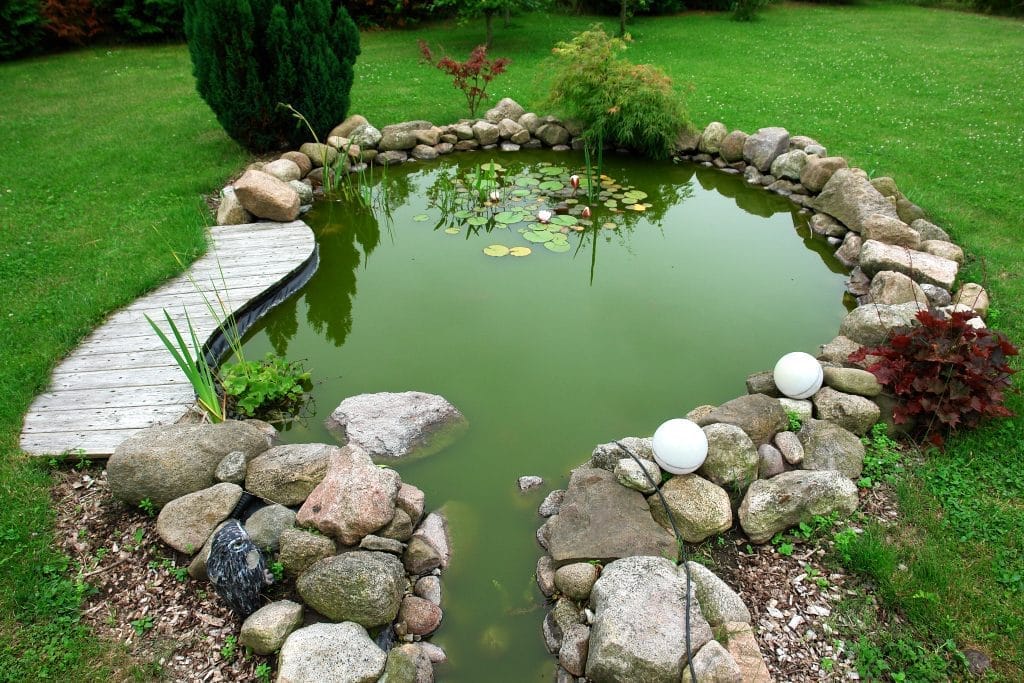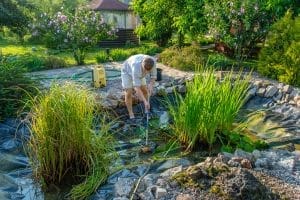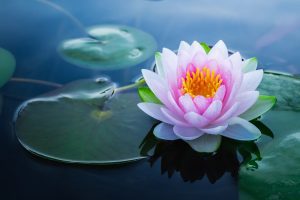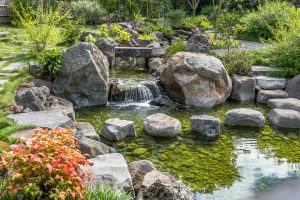
Pond Care Service: Essential Maintenance for Healthy Aquatic Life
Maintaining a beautiful pond requires more than just filling it with water and letting nature take its course. Regular pond care service ensures the ecosystem remains healthy, vibrant, and free from common issues like algae blooms or poor water quality. Utilising a monthly service plan can significantly enhance the beauty and functionality of any pond, making it a serene and inviting feature in gardens. A maintenance visit typically includes inspections, cleaning, and overall health checks of the pond ecosystem to minimize the effort required from the owner.
Many pond owners may not realise the extensive knowledge and skills required to maintain a balanced aquatic environment. Tasks such as water testing, filtration, and aquatic plant management are essential to prevent problems that could diminish the pond’s aesthetic appeal or harm its inhabitants. By engaging a pond care service, they gain access to expertise that ensures their pond thrives throughout the seasons.
Investing in pond care service not only saves time and effort but also provides peace of mind for owners. Regular maintenance helps to identify and rectify potential issues early, allowing for a harmonious ecosystem that can be enjoyed year after year. A well-maintained pond can become an integral part of outdoor living spaces, promoting relaxation and enhancing property value.
Understanding Pond Ecosystems
Pond ecosystems are intricate systems comprising various organisms, pond plants, and environmental factors. They thrive through the relationships between aquatic plants, animals, and water quality, all of which play critical roles in maintaining a balanced ecosystem.
The Role of Aquatic Plants and Animals
Aquatic plants are essential for oxygen production and provide shelter for fish and other organisms. Species such as lilies and reeds contribute to habitat diversity.
Fish and invertebrates are crucial components as well. For instance, goldfish or koi help control algae growth while providing nutrients back to the ecosystem when they feed. During maintenance activities, fish and wildlife are stored safely in covered housing tanks with air pumps to ensure their comfort and safety.
Plants also help stabilise the pond’s banks, preventing erosion, and play a vital role in nutrient cycling. In contrast, animals like frogs and dragonflies support pest control. All these interactions contribute significantly to the pond’s health.
Water Quality and Parameters
Water quality is critical for a thriving pond ecosystem. Key parameters include pH, dissolved oxygen levels, and nutrient concentration.
A balanced pH level, ideally between 6.5 and 8.5, supports a diverse range of organisms. Dissolved oxygen, which should exceed 5 mg/L, is vital for fish and aerobic bacteria. Untreated tap water can introduce phosphates that contribute to algae growth, so using alternatives like rainwater is preferable for maintaining healthy pond conditions.
Excess nutrients, primarily from runoff, can cause algal blooms that deplete oxygen and harm aquatic life. Regular monitoring of these parameters through testing kits aids in ensuring a healthy environment.
Seasonal Changes and Their Effects
Seasons greatly influence pond ecosystems. In spring, warmer temperatures stimulate plant growth and enhance wildlife activity. Frogs and fish often spawn during this period, increasing the population.
Summer can lead to overheating and lower oxygen levels, stressing aquatic animals. Proper shading and maintaining plant health are essential during this season. Additionally, it is important to maintain the pond liner by covering it with stones or surrounding it with plants to protect it from harmful sunlight and keep the pond aesthetically pleasing.
Autumn brings leaf litter, aiding nutrient cycling, yet excessive debris can block sunlight. Winter, on the other hand, often results in reduced activity as many species enter dormancy. Ice cover can affect oxygen levels, making regular checks vital.
Importance of Regular Maintenance
Regular maintenance is the cornerstone of a healthy and thriving pond. Without consistent care, ponds can quickly fall victim to a host of issues such as poor water quality, rampant algae growth, and the decline of aquatic plants and fish. By adhering to a routine maintenance schedule, pond owners can prevent these problems and ensure their pond remains a beautiful and enjoyable feature of their garden. Regular upkeep not only supports the health of aquatic plants but also maintains optimal water quality, creating a balanced ecosystem where all pond inhabitants can flourish.
Essential Pond Care Equipment
Maintaining a healthy pond and other water features requires specific equipment to ensure water quality, circulation, and clarity. Proper tools aid in keeping aquatic life thriving while preventing problems such as algae growth and stagnation.
Filters and Filtration Systems
Filters are crucial for maintaining clear and healthy pond water. They remove debris and pollutants, ensuring a balanced ecosystem. Different types of filters include mechanical, biological, and chemical filters.
Mechanical Filters: Trap solid waste and particles from the water.
Biological Filters: House beneficial bacteria that break down harmful toxins.
Chemical Filters: Remove chemicals and impurities through media, like activated carbon.
Choosing the right filter depends on pond size and fish load. Regular cleaning and maintenance of the filter system enhance its effectiveness and prolong its lifespan. A comprehensive pond clean, which includes servicing filtration equipment, is essential for maintaining optimal pond health.
Aerators and Oxygenation
Aerators enhance oxygen levels in pond water, supporting aquatic life’s respiratory needs. Oxygenation is vital, especially during warmer months when water temperatures rise, causing oxygen depletion.
Surface Aerators: Disrupt water surface tension, increasing gas exchange.
Subsurface Aerators: Release air at the bottom, promoting circulation.
Increased oxygen levels help fish, plants, and beneficial bacteria thrive. Installing an aerator can prevent issues like fish stress and algae blooms, ensuring a balanced pond environment. Additionally, regular pond cleaning services play a crucial role in maintaining oxygen levels and preventing algae growth.
Pumps and Water Circulation
Pumps play a central role in water circulation within a pond. They help to maintain flow and prevent stagnation by moving water efficiently.
Submersible Pumps: Installed underwater, these are ideal for smaller ponds.
External Pumps: Located outside the pond, these handle larger bodies of water effectively.
Proper water circulation reduces the buildup of debris and promotes even temperature distribution. Selecting an appropriately sized pump is essential for optimising circulation and maintaining healthy pond conditions. For large ponds, it is crucial to choose a pump that can handle the increased volume and ensure thorough water movement.
UV Clarifiers and Algae Control
UV clarifiers are effective tools for controlling algae growth. They use ultraviolet light to kill microorganisms in the water, improving clarity and aesthetics.
How They Work: Water passes through the UV chamber, where light damages the DNA of algae and harmful bacteria.
Placement: UV clarifiers should be installed in line with the filter, ensuring all pond water is treated.
Using UV clarifiers can significantly reduce green water and enhance overall pond health. Regular maintenance and timely replacement of bulbs are necessary for optimal performance. For small ponds, UV clarifiers are particularly useful in maintaining water clarity and reducing the need for frequent overhauls.
Pond Maintenance Tasks
Pond maintenance encompasses a variety of tasks that are essential for sustaining a healthy aquatic environment. These tasks can be categorized into water quality management, seasonal maintenance, and equipment upkeep. During regular maintenance visits, professionals typically perform filter maintenance, water changes, equipment servicing, vacuuming, and care for both plants and fish. By addressing these areas, pond owners can ensure their pond remains in top condition year-round.
Water Quality Management
Water quality management is a critical aspect of pond maintenance. It involves regularly monitoring and controlling the levels of ammonia, nitrite, and nitrate in the water, as well as maintaining the correct pH levels. Regular water changes and the use of water conditioners are essential practices to keep water quality in check. Additionally, it’s important to keep an eye on the levels of blanket weed and algae, taking necessary actions to control their growth. By staying vigilant about water quality, pond owners can create a safe and healthy environment for their aquatic life.
Seasonal Maintenance
Seasonal maintenance is vital for adapting to the changing needs of a pond throughout the year. Each season brings its own set of challenges and tasks that must be addressed to keep the pond healthy and thriving.
Summer Maintenance
Summer is a particularly critical time for pond maintenance due to the warm weather, which can lead to issues like algae growth and poor water quality. Regular maintenance visits during the summer months should focus on monitoring water quality, controlling algae, and ensuring the pond is well-oxygenated. It’s also crucial to protect the pond from excessive sunlight and maintain the water level.
Here are some additional tips for summer pond maintenance:
Use a pond cover or shade cloth to shield the pond from direct sunlight.
Regularly check the water level and top up as necessary.
Employ a pond aerator or air pump to boost oxygen levels in the water.
Keep a close watch on water quality and take steps to manage algae growth if needed.
Consider hiring a pond cleaning service for a thorough clean to remove debris and sediment.
By following these guidelines and performing regular maintenance tasks, pond owners can ensure their pond remains healthy and vibrant throughout the summer months.



